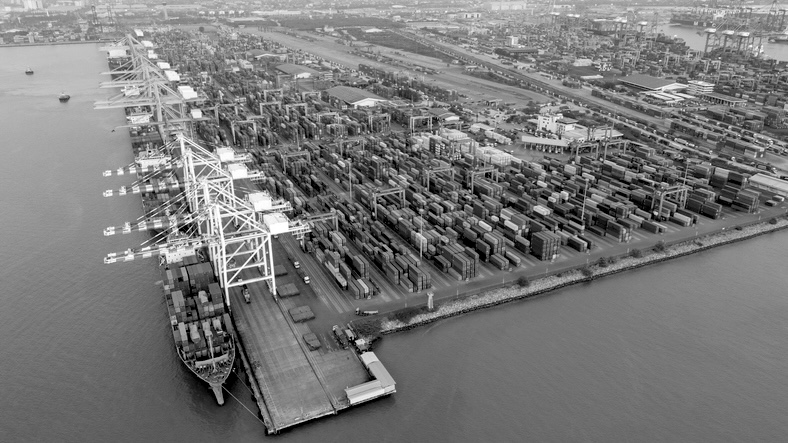
Understanding the New Tariff Landscape
The entire U.S. manufacturing sector faces mounting uncertainty as new tariff proposals threaten to reshape the industrial landscape. With directed tariffs of 25% on Mexican and Canadian imports, along with an additional 10% tariff on Canadian energy resources, manufacturers are navigating complex economic waters. Add to this the impending 10% tariff on Chinese imports and potential European Union tariffs on the horizon, and it’s clear the tariff impact on manufacturing lead generation is something that needs to be accounted for by every organization.
While immediate fears of a full-scale trade war may have subsided, the manufacturing sector remains in a precarious position. As Canada and Mexico negotiate for time and global markets adjust to these changes, manufacturers face critical questions about their operations, supply chains, and growth strategies. In this environment of economic uncertainty, businesses need to focus on building resilient revenue generation systems that can weather potential market disruptions.
Explore Manufacturing Lead Generation Strategies: Finding new opportunities for manufacturers is what we do at Athena SWC. Learn more here.
How Tariffs Reshape Manufacturing Dynamics
While reshoring efforts gained a football following the 2018 implementation of tariffs and gained steam during the COVID pandemic, these new proposed trade policies will create more challenges for manufacturers:
Cost Structure Disruption
Higher tariffs typically lead to increased costs for raw materials and components, potentially forcing manufacturers to make difficult decisions about pricing strategies and profit margins. This can directly impact competitiveness in price-sensitive markets.
Supply Chain Uncertainty
Global supply chain disruptions affect production capabilities and delivery times — and new tariffs certainly apply here— potentially impacting a manufacturer’s ability to meet customer demands consistently. This uncertainty can strain both existing customer relationships and new business development efforts.
Market Position Challenges
With the average cost per lead in the industrial and manufacturing sector already approaching $700, economic uncertainty could further increase customer acquisition costs as companies compete for a potentially shifting market share.
Building Resilience Through Strategic Lead Generation
While tariff impact on manufacturing lead generation is expected, it also highlights the need to create opportunities. Manufacturers are advised to strengthen their market position through strategic lead-generation initiatives. Here’s how manufacturers can adapt and thrive:
Diversify Lead Sources
Rather than relying on traditional channels, manufacturers should develop a multi-faceted lead generation approach that includes:
- Digital presence optimization
- Content marketing focused on value proposition
- Strategic email marketing campaigns
- Targeted social media engagement
- Industry-specific thought leadership
Enhance Value Communication
In a market where price points may be affected by tariffs, manufacturers need to effectively communicate their complete value proposition. This means:
- Highlighting quality differentiators
- Showcasing innovation capabilities
- Emphasizing domestic production advantages
- Demonstrating supply chain reliability
Focus on Digital Transformation
With in-person sales activities becoming more costly and complex, digital lead generation becomes increasingly crucial. This includes:
- Optimized website presence
- Strategic content development
- Automated lead nurturing systems
- Digital customer engagement tools
Competitive Positioning Through Inbound Marketing
Inbound marketing strategies become particularly valuable during periods of market uncertainty. It works constantly to position your business in front of the right audience at the right time and highlight why it remains a better option. Here’s how:
Cost-Effective Lead Generation
While traditional outbound marketing costs may increase, inbound marketing can provide a more sustainable and cost-effective approach to lead generation. This helps manufacturers maintain their competitive position while managing customer acquisition costs.
Market Education
Inbound marketing allows manufacturers to educate their audience about everything that makes their business stand out and a preferable destination. This includes quality differentiators, the advantages the manufacturer has in navigating the supply chain, its breadth of value-added services, and much more.
Long-term Relationship Building
By focusing on content marketing and thought leadership, manufacturers can build lasting relationships that transcend short-term market disruptions. As the relationship develops and deepens, it will be more resilient against short-term market disruptions — like tariffs.
Concerned About the Tariff Impact on Manufacturing Lead Generation? Take Action with Athena
The key to navigating tariff impacts lies in the proactive adaptation of lead generation strategies — preferably with an experienced partner who has a proven approach to delivering success. We help you develop targeted manufacturing lead generation strategies and then implement them with an integrated inbound/outbound marketing plan of attack.
From building sustainable pipelines to creating content to improve your digital presence, and much more, we help you optimize and measure your marketing ROI to create growth and manage turbulent changes outside your control.
Don’t let tariff uncertainty impact your growth trajectory. Contact our team today to learn how we can help you build a resilient lead generation strategy that positions your manufacturing business for success, regardless of market conditions.

